It might seem like a felicitous fluke that wine regions the world over tend to be in some gorgeous places. When you think about it, though, it makes perfect sense. Grapevines thrive in mild, sunny climates. Those grown on slopes produce really interesting wines. And winegrowers like reliable water sources like rivers and lakes. Add to that the fact that many wine regions in Europe were planted first by the Romans and then the Church, and you’ve got some sun-dappled villages and historical landmarks to visit as well.
What you might not realize, though, is that what were once bustling commercial routes and roads winding through wine regions are now some of the world’s premier hiking trails and paths. Here are four spectacular walking and hiking routes that also just happen to pass through some fabulous wine regions.
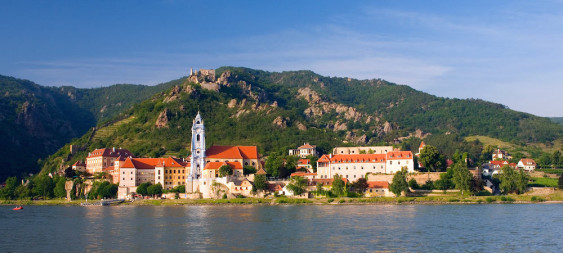
Austria’s Wachau World Heritage Trail runs along the Danube Valley. Be sure to visit the colorful town of Duernstein.
Wachau World Heritage Trail, Austria
Just an hour northwest of Vienna lies one of Europe’s most beautiful wine regions, the Wachau. Riesling and Grüner Veltliner vineyards furrow the steep banks of the Danube River valley in ancient but well-kept terraces. The river at this point is wide and rushing, and lined with once-important trading towns that are now quaint villages, each with a rich history, and a castle ruin or two. Though hikers and bicyclists have been enjoying the roads and trails here for decades, a 180-kilometer (112-mile) stretch was opened back in 2010 and divided into 14 legs for a nice leisurely journey through the area.
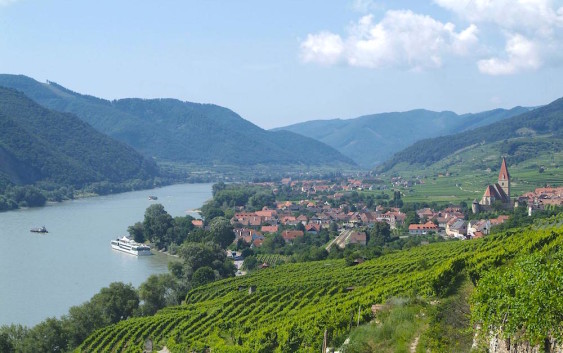
Vineyards grow right up to the town walls here.
While there, be sure to stop in the towns of Krems and Dürnstein, whose colorful buildings and cobblestone streets look like they’ve sprung to life from the pages of a fairy tale. Aggstein Castle feels like a massive aerie, perched as it is on a cliff in a strategic position overlooking the river, while the Baroque Melk Abbey and its impressive library and gardens are one of Austria’s cultural gems. You can try the local vintages at any number of little heurigen, or wine bars (just look for the green wreath over the door), or visit the tasting rooms at wineries including Nikolaihof and F.X. Pichler.
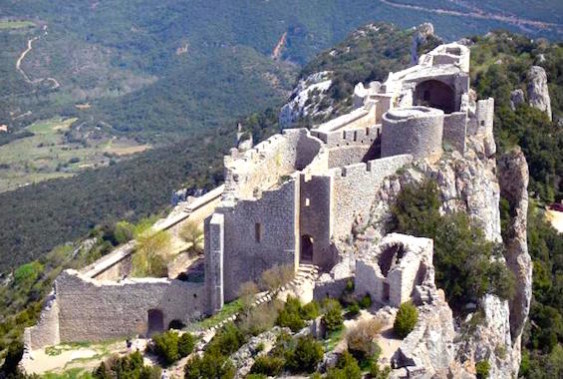
Peyrepertuse is just one of dozens of ruined fortresses along France’s Cathar Trail.
Cathar Trail, France
In the very far south of France, quite near the border of Spain, lies the remote region of Languedoc-Roussillon. While we tend to think of France as an old country that pretty much looks like its present shape on the map, this region was fiercely independent up until the end of the 17th century, and its culture, traditions and, yes, its wines, are quite unique. If you visit the region, one of the things you’ll notice are the ruined hilltop fortresses that dot its desolate crags. Many were the last redoubts of recalcitrant nobility and a little-known Christian sect called the Cathars (you might have read about them in The Da Vinci Code).
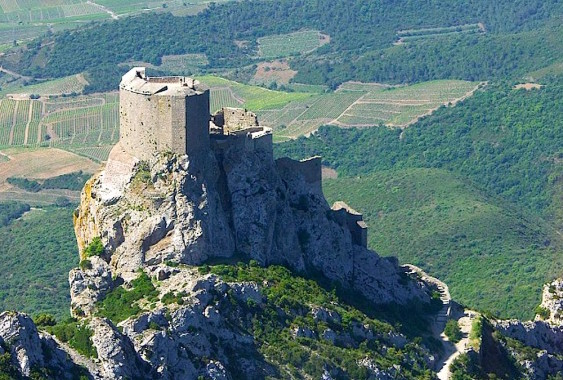
Be sure to visit Queribus and the nearby wine town of Maury.
You can hike from one castle to another, and I’d personally suggest the dramatic ruins at Montségur, the peak-straddling fortress of Peyrepertuse, and the monolith of Quéribus, whose “salle du palmier,” so named because its fluted columns look like palm trees, must be one of the starkest but most beautiful examples of French gothic architecture. Just down a (very) windy road from the summit, is the town of Maury, with its famous wines, some of which are aged in the sun in glass amphora. You can stop in to see some at Domaine Pouderoux. Not far from here, in the town of, is one of the region’s most acclaimed (and biodynamic) winemakers, Olivier Pithon.
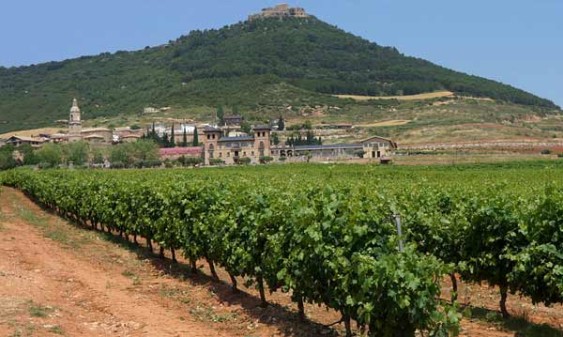
Make a pilgrimage to Rioja along the Santiago de Compostela Trail.
Camino de Santiago, Spain
No doubt you’ve heard of the famous pilgrimage trail of Santiago de Compostela, but did you know it passes through one of the Spain’s most famous wine regions, La Rioja? I mean, it is Spain, after all, so you can’t throw a stone without hitting a grapevine.
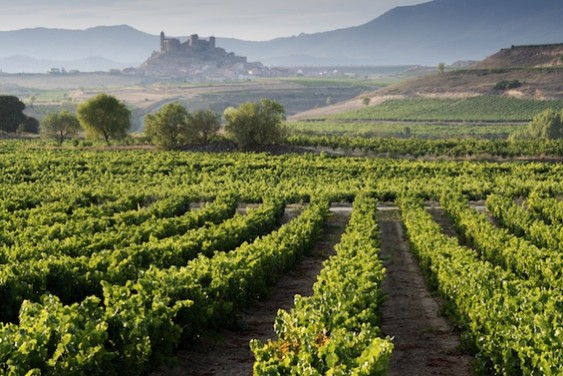
Rioja is one of Spain’s most famous (and beautiful) regions. Photo credit: Shutterstock.
But if you visit Rioja, you’ll see walkers of all stripes from all over the world completing parts of the trail day by day. Take a few hours out on the trail for yourself near Navarrete, complete with a tasting at Bodegas Corral and a walk around the millennium-old ruins of a church on the grounds here. Pamper yourself that evening with a stay at the Marqués de Riscal resort just outside the medieval town of El Ciego.
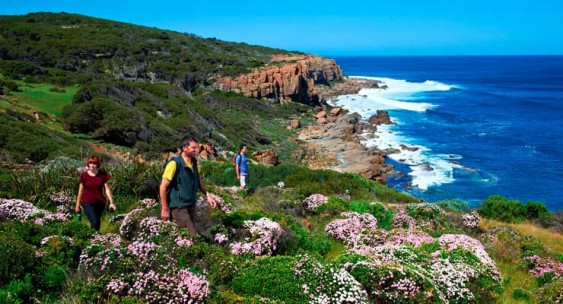
Besides the wine, the Cape to Cape track is a great reason to visit Western Australia’s Margaret River.
Cape to Cape Track, Australia
One of Australia’s most remote but most interesting wine regions is Western Australia’s Margaret River. The area lies on a stretch of coast along the Indian Ocean a three-hour drive south of Perth. So yes, it takes some time to get here. But once you arrive, you’re rewarded with some phenomenal landscapes including beautiful wildflowers and kauri forests, and spectacular Bordeaux-style wines.
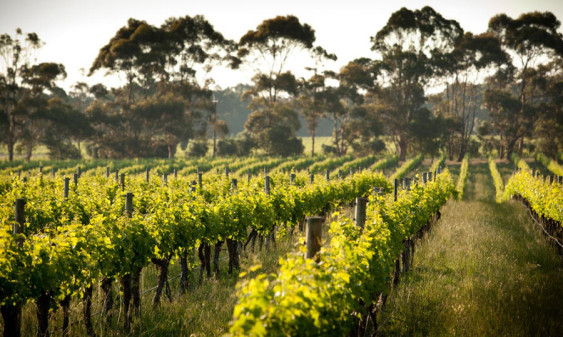
Hike by day, wine taste by night at wineries like Cape Mentelle.
Even better, you can spend your time between gourmet meals and wine tastings at famous estates like Cullen Wines, Cape Mentelle and Vasse Felix by hiking the red-rock cliffs along the coastal Cape to Cape Track that runs between Cape Naturaliste and Cape Leeuwin. The path leads from one stunning vista to the next (some of which yield views of migrating whales in the springtime). It’s is clearly marked, with both easy and more challenging sections that end at small towns and resorts where you can spend the night.

